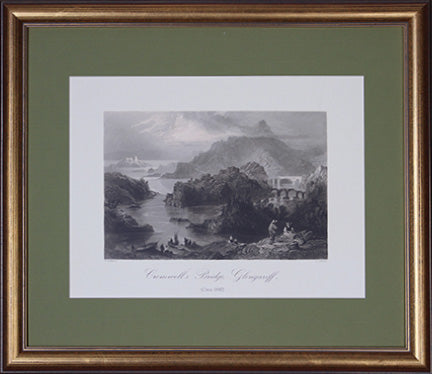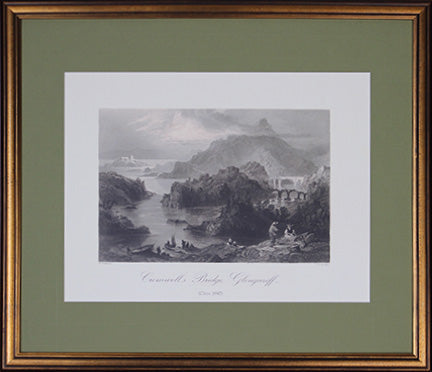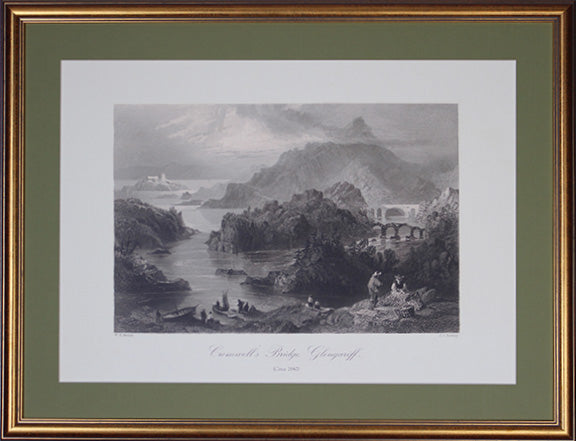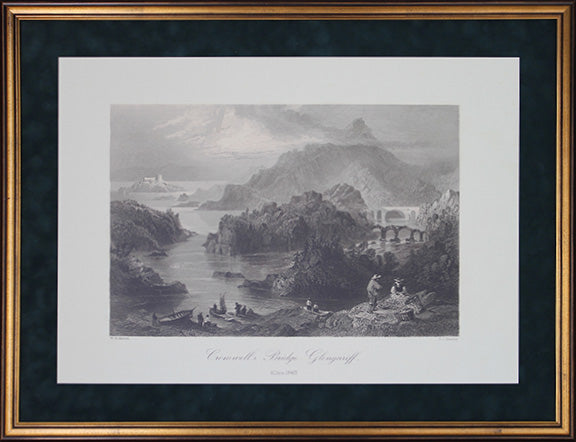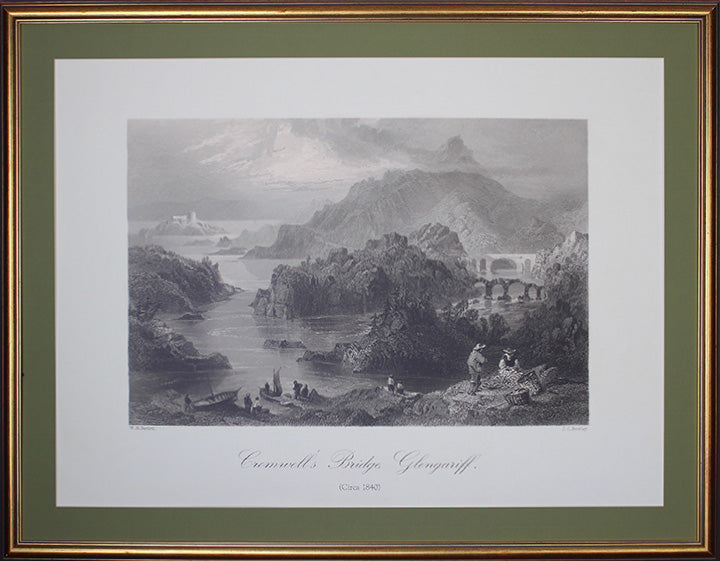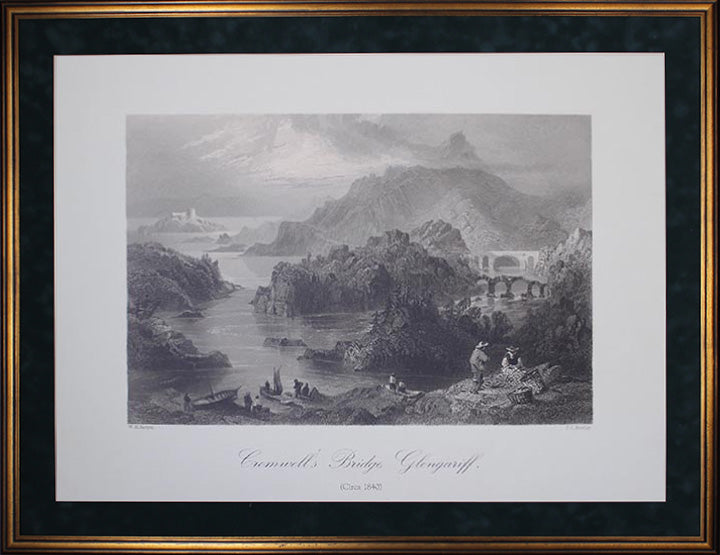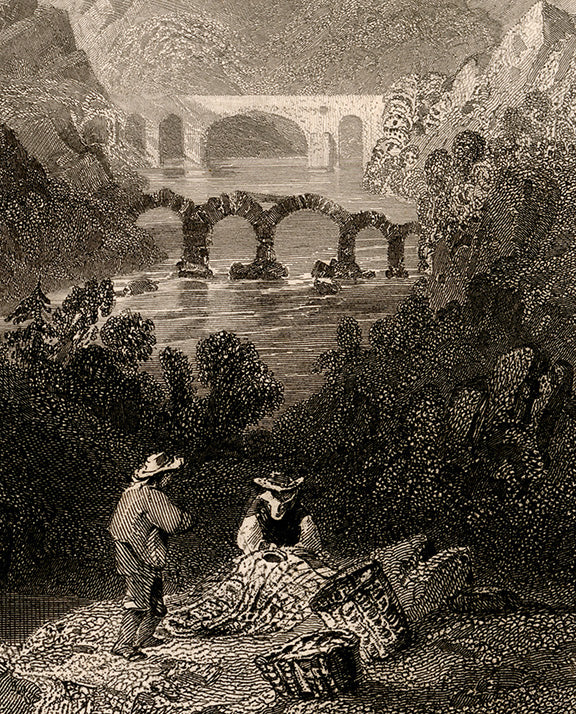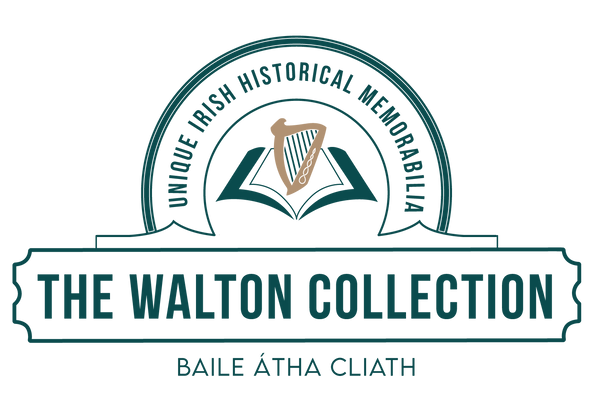The Walton Collection
County Cork -Glengariff - Cromwell's Bridge c.1840
County Cork -Glengariff - Cromwell's Bridge c.1840
Couldn't load pickup availability
A stunning view by William H. Bartlett of Cromwell’s Bridge near Glengarriff, is located on what was the old high road to Castletown-Bearhaven. The views shows Garnish Island (Oileán Garinish) and its Martello Tower (with is unbridled and militarily strategic views of Bantry Bay) in the distance as we look toward the Beara Peninsula and across the bay. In the foreground Bartlett captures a scene of local fishermen calmly working their boats and repairing their nets (see close up detail inset below).
Folklore pertaining to the name of the bridge abounds. Cork antiquarian John Windele noted in 1839: “Tradition says, that on the approach of Cromwell, on his way to Berehaven , the natives broke down the bridge in order to impede his progress, but he compelled them again to rebuild it; and thus has it since retained his name, as has also the ford ‘Ath Cromwell,’ over which it was erected". However , according to Irish Heritage News "while the bridge may have been contemporaneous with the period of the Cromwellian conquest, the name probably has nothing to do with Oliver or his army. “Cromwell” is attached to many placenames throughout Ireland and particularly to built infrastructure; in fact a nearby disused roadway is called Cromwell’s Road....Returning to Cromwell’s Bridge in Glengarriff, surrounded as it is by woodland, it has been suggested that the name evokes the Irish “crom choill” meaning “sloping wood”...
Another interesting placename in the area is Corriveillaun, which applies to the woodland just east of the bridge. The name is marked on the Ordnance Survey 25-inch map, which was produced between 1897–1913. Given the slight phonetic similarity, “Cromwell” could potentially derive from “Corriveillaun”, which is evidently an Anglicized name but our research has not uncovered the original Irish version".
Regardless of the true origins of the name the appearance of Garnish Island in this illustration is particularly interesting, capturing the barren topography of the island 15 years before it was purchased by Edwin Wyndham-Quin, 3rd Earl of Dunraven and Mount-Earl (1812-1871), as a holiday retreat.. He commissioned the architect James Franklin Fuller (1835-1924) and the building contractor Denis William Murphy (1799-1863, father of the capitalist William Martin Murphy so famous for his anti-trade unionism during the Dublin Lockout in 1913) with the creation of a house, later called "Garinish Lodge", and a garden on the island, which is now famous for its semi-tropical collection of plants.
Please note the Pine Green mount board is not as quite dark as it appears in the frame image and the colour of the final print is closer to the detail sample from the picture inset below.
A beautifully framed reproduction set behind glass with a choice of a pale palm green or pine green suede inner surrounds with a choice of two fine antique style wooden frames; gold leaf or gold and mahogony finish. Prints are available in A3, A2 and A1 sizes with proportionately larger frames to suit all decor and wall space.
To see which one you prefer simply select the frame type choice below and it will appear in the larger picture above.
